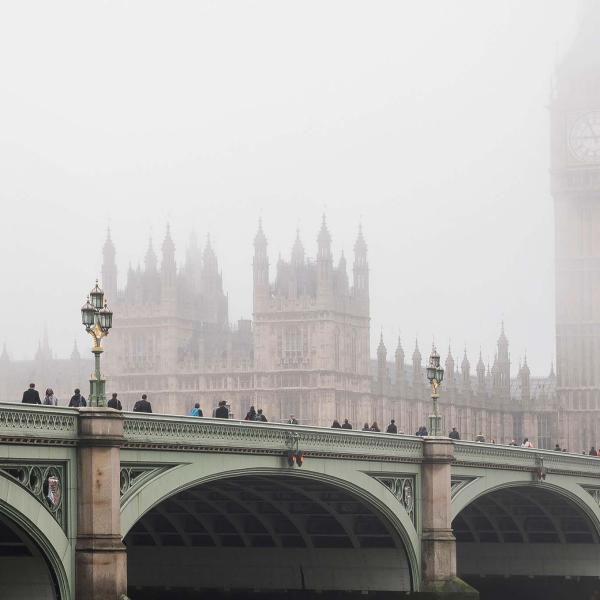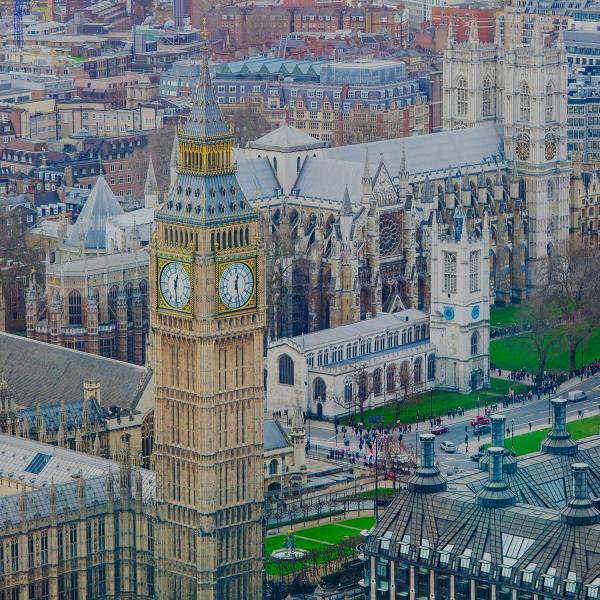- The Chancellor has announced an increase in spending on public services for next year. Day-to-day spending on public services will grow by 4.1%, or around £13.8 billion, between 2019−20 and 2020−21 in real terms. This represents of a top-up of £11.7 billion to the provisional spending plans Mr Javid inherited from his predecessor, alongside a £1.7 billion top up to existing capital spending plans for 2020−21, meaning that total spending will be £13.4 billion higher next year than was planned in the spring.
- This is enough to reverse around two thirds of the real cuts to day-to-day spending on public services – at least on average – since 2010, and around one third of the cuts to per capita spending. This, however, masks substantial variation within the total. If we exclude Health, the additional spending will only be enough to reverse around a quarter of the cuts since 2010 (or around 15% of the per capita cuts to non-Health areas).
- Mr Javid confirmed additional funding for his priority areas in 2020–21. This includes a £1.8 billion real increase in funding for English schools, £400 million for further education and sixth form colleges in England, £750 million towards the eventual goal to recruit an additional 20,000 new police officers in England and Wales and an extra £1 billion for local government budgets, ring-fenced for social care.
- While marking an end to austerity for many departments, today’s announcements will not be enough to return all departments’ budgets to their pre-austerity levels. In 2020−21, the day-to-day Department of Health and Social Care budget will be £25.3 billion higher than in 2010−11, in today’s prices. But budgets for the Home Office, Justice and Environment, Food & Rural Affairs will be £4.6 billion lower, or 17% lower on average, than a decade earlier.
- Making major spending decisions without the latest economic and fiscal forecasts is a risky move for the Chancellor. On the basis of forecasts from the spring, extra borrowing to fund today’s announcements could – just – be accommodated within the government’s fiscal targets. But the next set of forecasts from the OBR, due later this year, are likely to reflect a deterioration in the near-term outlook for the UK economy and public finances.
- It looks as though it will be touch-and-go whether the Chancellor will meet his fiscal targets in the Budget later this year, even with a smooth departure from the European Union. As the Office for Budget Responsibility has pointed out even a relatively benign “no-deal” Brexit would further weaken the economy and push up borrowing by around £30 billion a year. Should this occur then 2020–21 may represent a pause, rather than an end, to austerity for spending on public services.
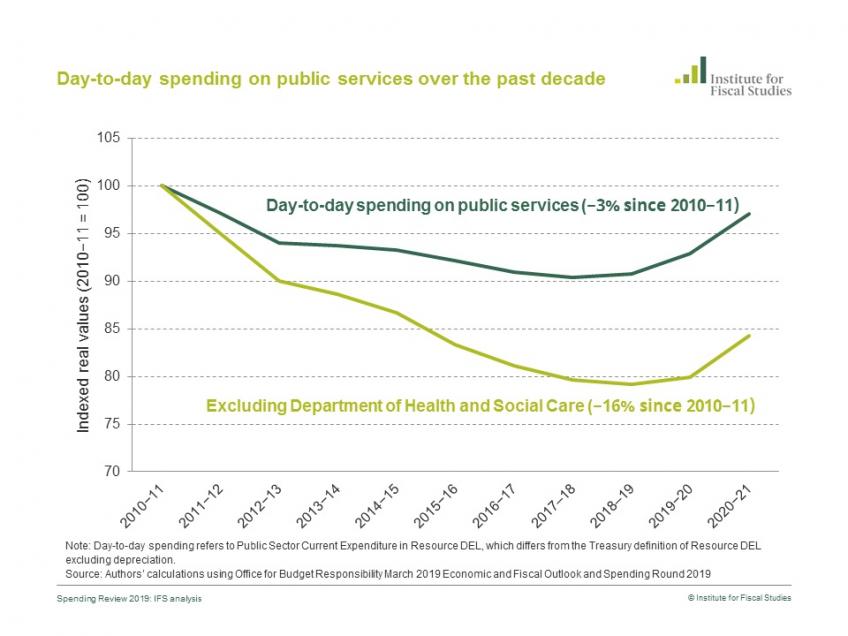
Day-to-day public service spending was cut by around 9% between 2010−11 and 2018−19, equivalent to roughly £30 billion in today’s prices. An increase in spending in 2019−20, along with today’s announcements, means that in 2020−21 day-to-day spending will be just 3% below its level a decade earlier. Around two-thirds of the real cuts since 2010 will have been reversed, and around one third of the cuts to per-person spending. Much of this increase is driven by additional funding for the NHS, however. Once we strip out the Department of Health and Social Care, spending next year is set to be around 16% below its 2010−11 level. Only around a quarter of the cuts to non-Health areas of spending will have been reversed, and only around 15% of the per capita cuts to those areas.
Ben Zaranko, Research Economist at IFS, said:
“The Chancellor confirmed today a 4.1% real increase in day-to-day public service spending next year, with no department facing a real cut to its budget. But spending will still be 3% below its level a decade ago, and more than 9% lower in per person terms. Non-health budgets have also lost out to rising NHS funding: real spending outside the Department of Health will still be 16% lower (21% lower in per person terms) next year than in 2010−11.“
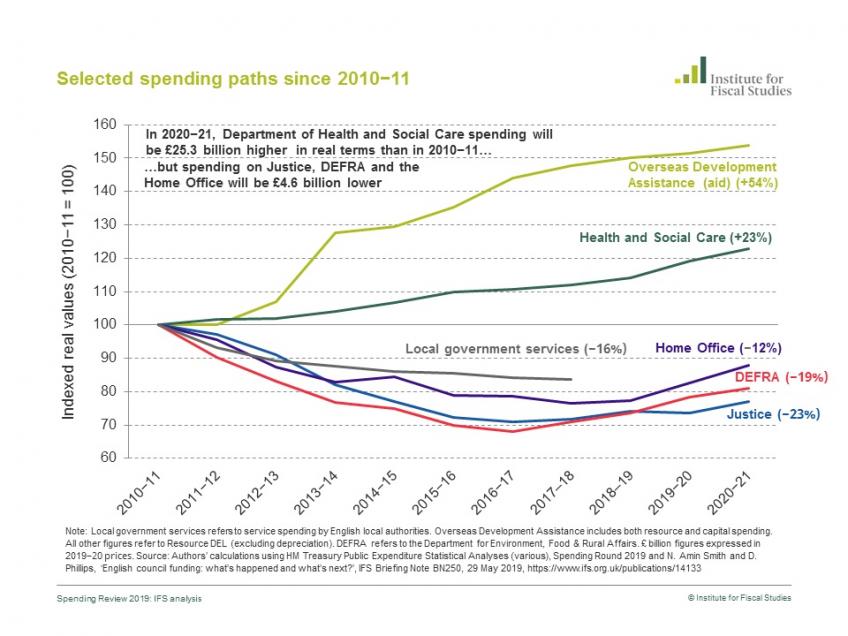
Different areas of spending have fared very differently since 2010. In 2020−21 the day-today budget for the Department of Health and Social Care will be £25.3 billion (23%) higher in real terms than a decade earlier. In contrast, spending on Justice, the Home Office and Environment, Food & Rural Affairs will be £4.6 billion (17%) lower than in 2010−11.
Rowena Crawford, Associate Director at IFS, said:
“Today’s Spending Round included a welcome boost in funding for some areas that have been neglected in recent years, such as the justice system, local government and further education. But the scale of the cuts experienced by those areas since 2010 means that this is only the first step in reversing austerity for those public services.”
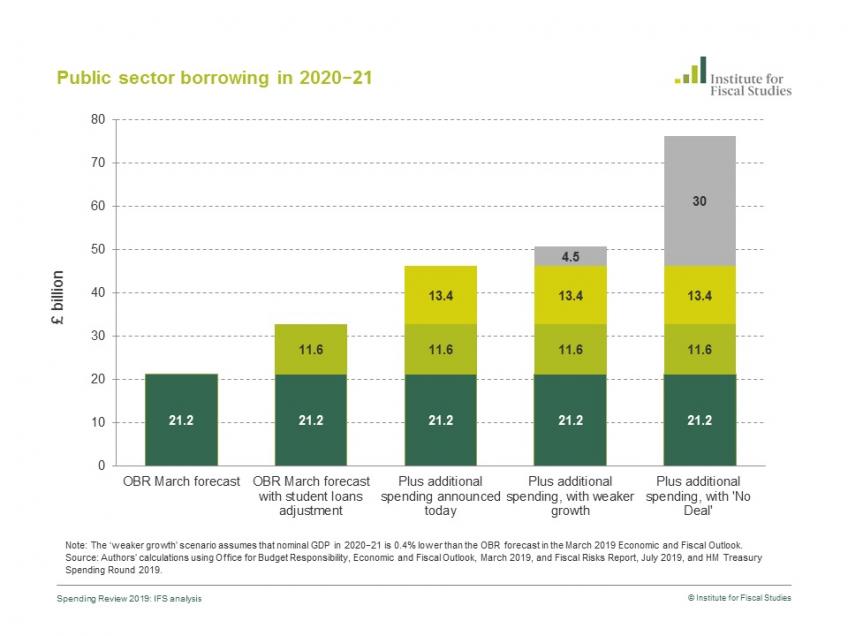
In their forecasts published alongside the Spring Statement in March, the Office for Budget Responsibility (OBR) forecast government borrowing next year (2020−21) of £21.2 billion. A change in the accounting treatment of student loans will add around £11.6 billion to this total. In today’s Spending Round, The Chancellor announced an extra £13.4 billion of spending for next year on top of existing plans. All else being equal, that would suggest borrowing next year of just over £46 billion, and – on the basis of March forecasts – the Chancellor would be on track to meet his fiscal targets – just.
But the next set of forecasts room the OBR are likely to reflect a deterioration in the near-term outlook for the economy and public finances. A downgrade to the growth forecast similar to that of the Bank of England could mean an increase in borrowing of around £4.5 billion next year. A “no deal” Brexit would lead to a much larger revision to the economic and fiscal forecasts; the OBR recently estimated that even in a relatively benign “no deal” scenario government borrowing next year would be around £30 billion higher from 2020−21 onwards.
In the absence of offsetting tax rises, it therefore appears to be touch-and-go whether the Chancellor will meet the current target to keep the structural deficit in 2020−21 below 2% of national income.
Paul Johnson, IFS Director, said:
“By making major spending decisions without having the most up-to-date forecasts for the economy and public finances, the Chancellor is taking a gamble. As it stands, there looks to be a very real risk of having to choose between tax increases or missing his current fiscal targets come the Budget later this year– even with a smooth departure from the European Union.”







